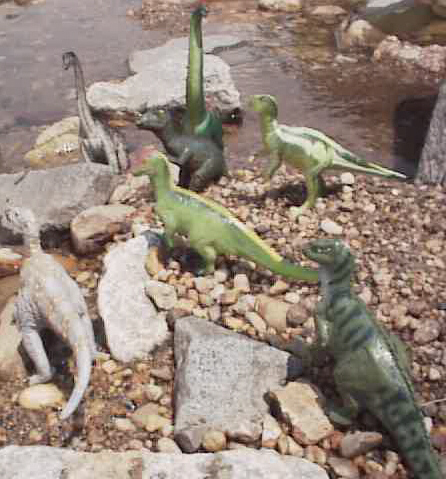Early Cretaceous
Wealdon Group
This formation in north-west Europe preserves the best Early Cretaceous dinosaurs in Europe. Low-lying areas with broad meandering streams and lakes characterized it. Sauropods continue to be important. Macronarians, brachiosaurs and titanosaurs, remain moderately diverse but rare as in the Jurassic. Diplodocids disappear while iguanodonts are wide spread and diverse. Stegosaurs become rare but polacanthine armored dinosaurs that were rare in the Jurassic become more common. Europe shares with North America polacanthines, iguanodonts and allosaurids. The spinosaurids have African connections.
updated 112114

Iguanodon lived in herds near lakes in warm swampy country, and was the biggest, most plentiful and most widespread iguanodontid. It could move quickly if necessary. Polacanthus finds have often been associated with those of Iguanodon.
Smaller, lighter and faster than Allosaurus, Neovenator had a 'puffin-like' skull and very large nostrils and extremely sharp, teeth. It preyed on Iguanodon, the dominant herbivore of the sub-tropical environment in which both lived. Although originally classified as an allosaurid, more recent studies suggest that it is probably a carcharodontosaurid.

Sauropods are present but uncommon compared to iguanodonts.
Hypsilophodon was a small browsing herbivore, but it may have been omnivorous and eaten insects and small vertebrates.
